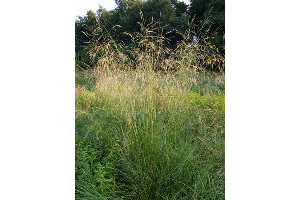Many populations of Deschampsia cespitosa are tolerant of toxic compounds and are often used in the reclamation of mining sites
Photo Credit: © Christian Fischer via Wikimedia Commons.
Deschampsia cespitosa
Common Name: tufted hairgrass
Plant Functional Group: Graminoid
Class > Order > Family: Magnoliopsida > Poales > Poaceae
